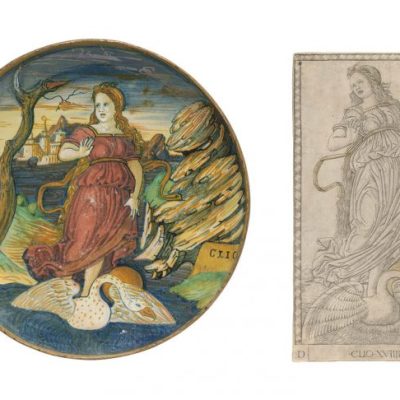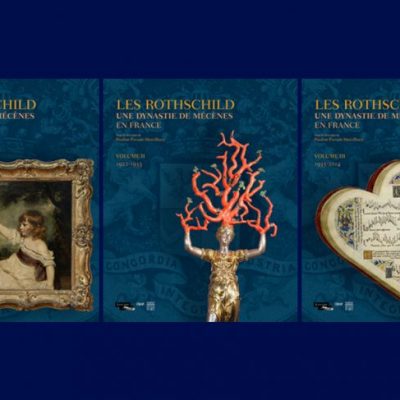Working with Michael Eden on his new exhibition ‘Form & Transform’ at Waddesdon Manor, Buckinghamshire, has caused me to look anew at the objects which inspired him to make his wildly coloured 3D-printed creations. As curator of decorative arts at Waddesdon, I research our collection of 18th-century French decorative arts, including furniture and Sèvres porcelain. Every curator forms their own network of specialist colleagues and resources, and I am no exception. However, this often entails comparing like with like – one Sèvres elephant vase with another, for example. Working together with a contemporary maker like Eden has caused me to reconsider the strangeness of what I consider ‘normal’.
A Pair of Elephant Vases (2018), MIchael Eden. Courtesy Adrian Sassoon; © Michael Eden
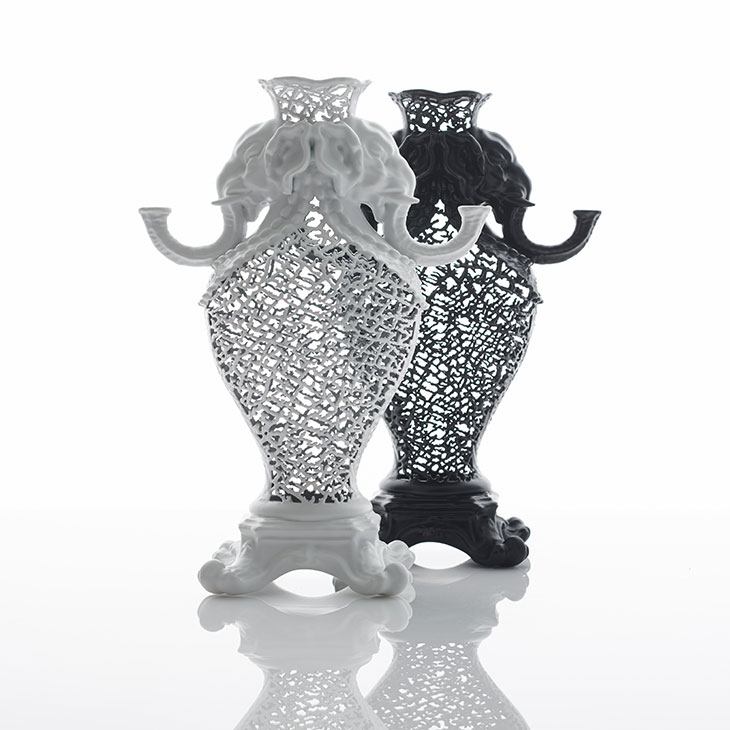
Creative responses to the objects we care for make us think about them from the perspective of process and production – the ideas that led to them rather than how they were received. Eden’s response to pattern, for example – translating surface pattern into surface texture – makes one reconnect with the original inspiration for the designers of the 18th century. A Sèvres designer would have delighted in the playfulness of an elephant vase decorated with pierced, three-dimensional translations of a micrographic image of an elephant’s hide, but he would never have been able to make it in soft-paste porcelain. Louis-Joseph Le Lorrain’s drawing of a fantastic ewer, fanciful and impossible, springs into resplendent modern life in Eden’s fuchsia rendering, composed of 3D-scanned homegrown courgette leaves, a ring of iPods alternating with lyres, and a classical dancer wearing headphones, enjoying her own silent disco.
Since the exhibition opened last month, the juxtaposition of the past and present has already caused visitors to ask different questions of Waddesdon’s collections. A group of house guides came to view the exhibition on the first day and asked whether it could be ‘art’ if the artist had never touched the object. This led us to talk about ‘makers’ in the 18th century, who directed workshops of journeymen and apprentices. What makes drawing on a screen different from drawing on paper? When is a tool a cheat? Creating a 3D-printed object is not done at the flick of a switch, or independently of human input – the skill and knowledge required to design, draw and make it is directly comparable to what is needed in traditional decorative art production, while the tools employed are growing ever more sophisticated.
Design for a fantastic ewer (c. 1750), Louis-Joseph Le Lorrain. Waddesdon (National Trust). Photo: National Trust/Waddesdon Manor/Francis Carver
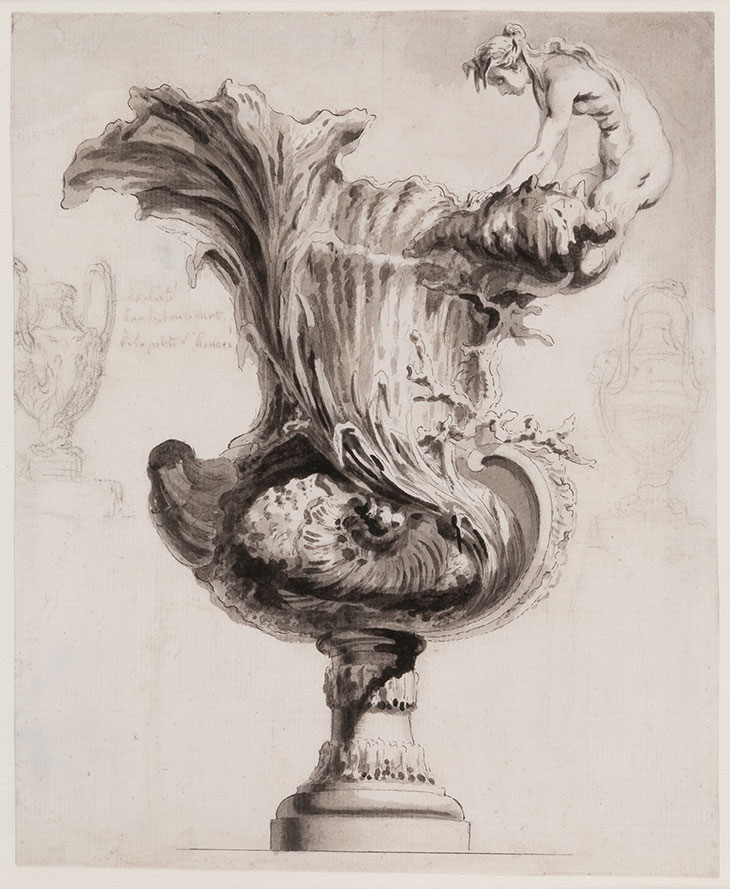
Eden also poses questions with objects. One of his vases, the Vncnns Vase (2013), was created using online images of a Vincennes ‘vase Duplessis’, which he had not seen in reality. When he finally did see the original vase, it surprised him – there were things about it that he could not learn from 2D representations on the computer screen. In art history, we are increasingly reliant on ‘seeing’ objects digitally, but nothing compares to feeling a work’s weight or texture, haptic knowledge which can immediately tell us more than an image alone can.
‘Michael Eden: Form & Transform’, installation view at Waddesdon Manor, 2018. Photo: National Trust/Waddesdon Manor/Mike Fear
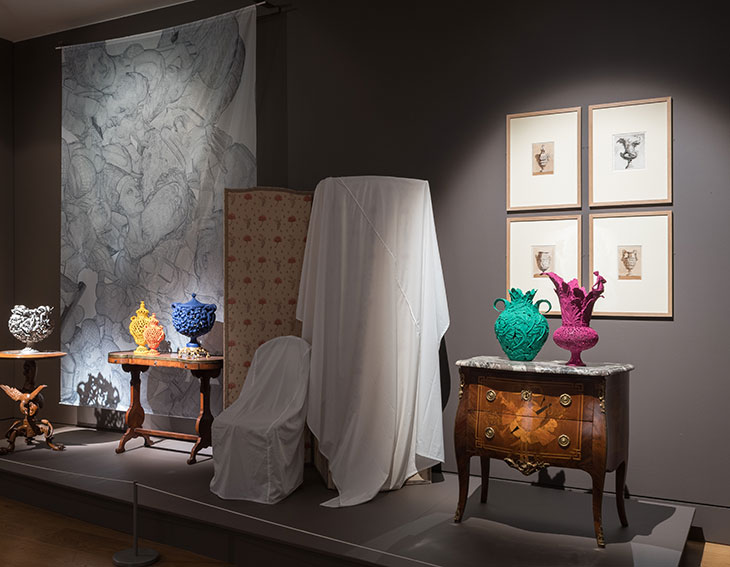
The exhibition at Waddesdon is set out in a series of stage settings in which objects from the collection, alongside Eden’s creations, are presented in ‘rooms’ in varied states of coveredness. Sheets are draped over hidden objects, a reference to our annual ‘putting the house to bed’ and its subsequent reawakening – an appropriate setting for an exhibition that is, at its core, about the transformations of time and the uncovering of new perspectives.
‘Michael Eden: Form & Transform’ is at Waddesdon Manor until 21 October.
